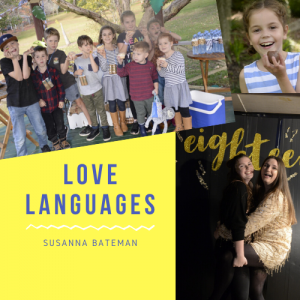 Love Languages
Love Languages
Everybody has different ways of wanting to receive love and giving love. These are naturally built within us and will be different for everyone. The five basic love languages are physical touch, words of affirmation, quality time, gifts and acts of service. In other words, our love languages are what we need from someone in order to feel loved by that person.
Most people have at least two of the love languages that they connect with. We can still appreciate the remaining love languages, but they will hold less importance for us. Once we can understand the love languages of ourselves and our partners it can take the complication out of relationships. If we can also begin to understand the love languages of our children then that can also take the complication and confusion out of those relationships. This will allow us to meet the needs of our partners and children in a much better way.
Meeting someone’s love language can be sacrificial to start with, but that vanishes once you reap the rewards of meeting someone else’s love needs. The reward of meeting my children’s love languages when they were young children through to teenagers has been astronomical as they’ve become adults.
It’s important as parents to be creating the space to understand and meet your children’s love language needs. This may mean as a family deliberately choosing to meet a particular member’s love language. It can become difficult for a child to understand why their sibling’s love language is being met while theirs isn’t. If we can explain to our children why we need to meet each other’s needs you are setting them up to have great relationships.
By teaching our children their love language we help them to better value themselves. When we can begin to teach our children the love languages of those around them they begin to value others as well. By understanding that different people connect with different love languages this also encourages resilience within our children.
My son Ben asked me what my overall encouragement would be to give to parents around love languages. So here it is.
We are all different and are put together differently. This may bring up challenges but if we can begin to understand our partners and our children and value the differences, the family unit will come out much stronger. I encourage you to go online and complete the love languages test with your family and get a better understanding on how to meet everyone’s love languages.
Blessings,
Susanna



